Catch Your Food at Hirobun Nagashi Somen Outside of Kyoto, Japan
If you want a unique dining experience while visiting Japan during the summer, look no further than nagashi somen! One place to try nagashi somen is at Hirobun, located just outside of Kyoto. At Hirobun you not only get to eat delicious somen noodles, but you also get to play with your food! Are you curious yet? Then keep on reading!
What is Nagashi Somen?
First things first let’s talk about somen. Somen is a type of Japanese noodle made from wheat flour. It is extremely thin, for comparison, kind of like angel hair pasta. Typically, it is served cold but can also be found as an accompaniment to hot pot entrees. Occasionally you may also find it used in ramen dishes. In this case, it is served as nagashi somen.
Nagashi translates as “to flow” which connects to this interesting way of eating somen noodles. Nagashi somen is an eating style where you “catch” your noodles with chopsticks as they make their way down a bamboo shoot in a stream of cool flowing water. In this method, the noodles are served cold with a dipping sauce called tsuyu, made primarily with dashi (soup stock) and soy sauce, a concept similar to cold soba.
Our Experience at Hirobun Nagashi Somen
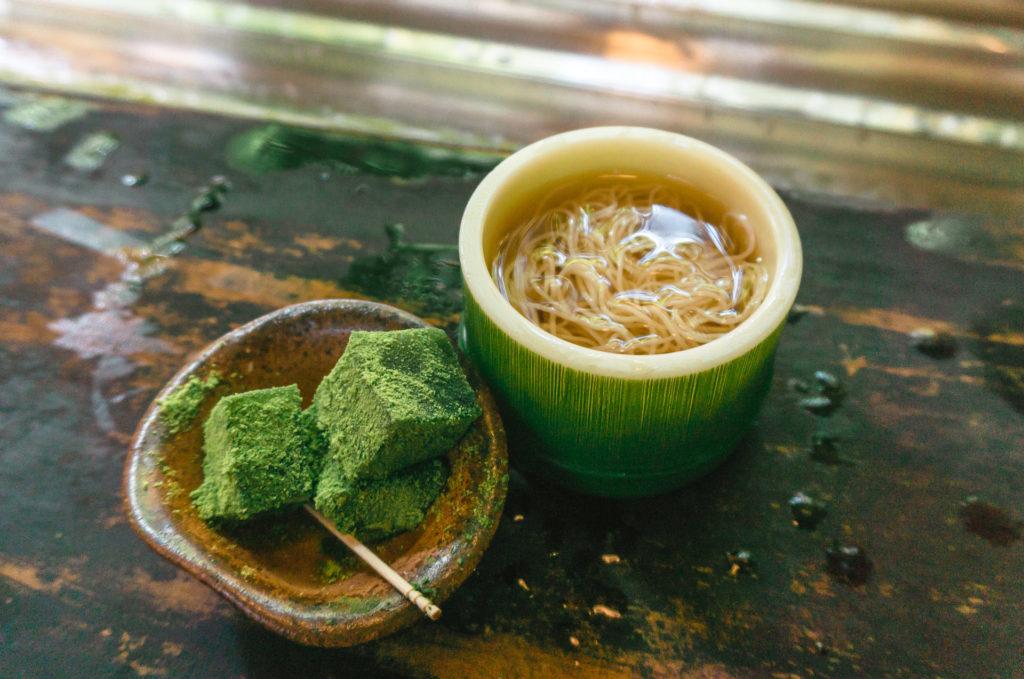
Logan and I first tried nagashi somen at a restaurant called Hirobun. Hirobun is located in Kibune, a small mountain town outside of Kyoto. We visited Hirobun in July because nagashi somen is usually only available during the summer months in Japan. This is partially because it is served cold but also because the area where you eat is located outside. However, if you happen to visit Kibune during another time of the year, you can enjoy the ryokan and kaiseki meals available here. Hirobun also has delicious hot pot meals in the winter!
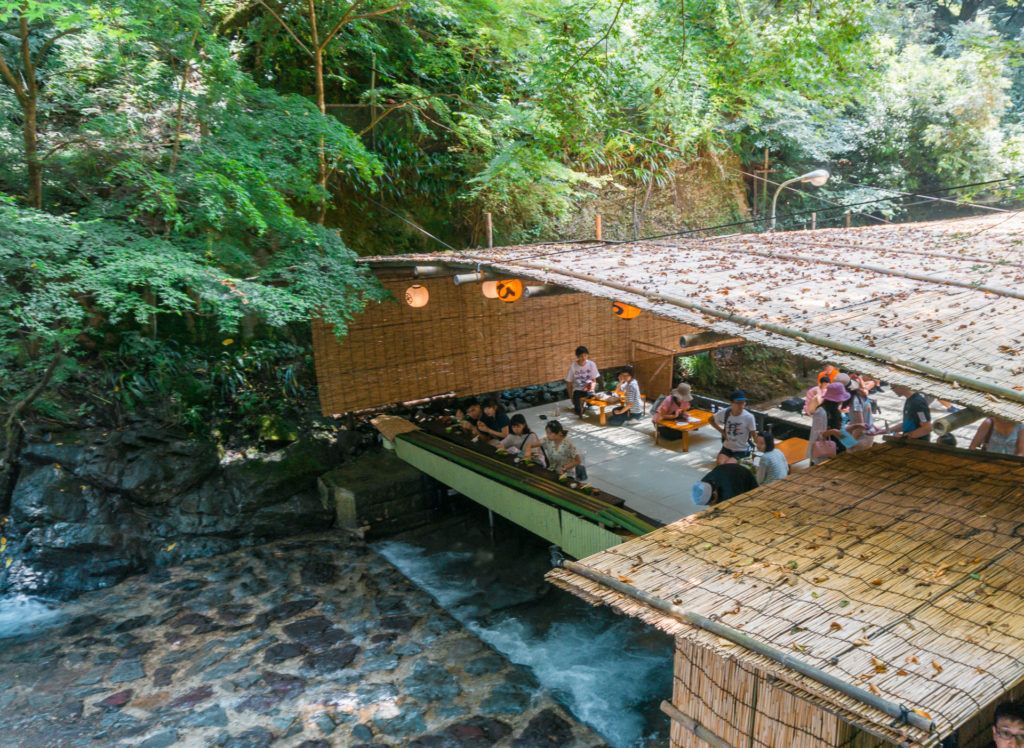
When we first arrived in Kibune we made our way to Hirobun and stood in a line to get a time slot. Hirobun opens at 11am but the line was already forming and pretty long around 10:30am when we got there!
Because this restaurant is so popular, I’d recommend getting there around 10am to get a number and time slot because once they are gone, you’re out of luck! Plus there are nearby attractions to visit in this area, which I will cover in a moment.
While in line, we waited about 30 minutes. Then we got our number and a time slot which was for 12:30pm. I’d say there were roughly 20 people ahead of us in line so that might help put it in perspective for you. Staff also asked us to pay for our meals in advance. This ensures that everyone follows through with their reservation instead of getting a time slot and not returning. After paying, we left the line and ventured around Kibune to visit some attractions.
About ten minutes before our time slot we returned to Hirobun to give them our number card and wait to be seated. We were escorted down a path of metal stairs (be careful these can be slick!) where we took our shoes off and placed them in a cubby before stepping onto the tatami mats where we would be dining.

Then we made our way to a larger area with low tables behind Hirobun’s nagashi somen dining area. This is where we continued to wait for about 15 minutes before we were called to come towards the dining area and shown our seats.
The dining area to experience nagashi somen at Hirobun is a unique feature of this experience! I first noticed a small waterfall perfectly located in front of where guests sit. I loved this feature as it added to the ambiance of the restaurant. It was a refreshing touch to curb the summer heat.
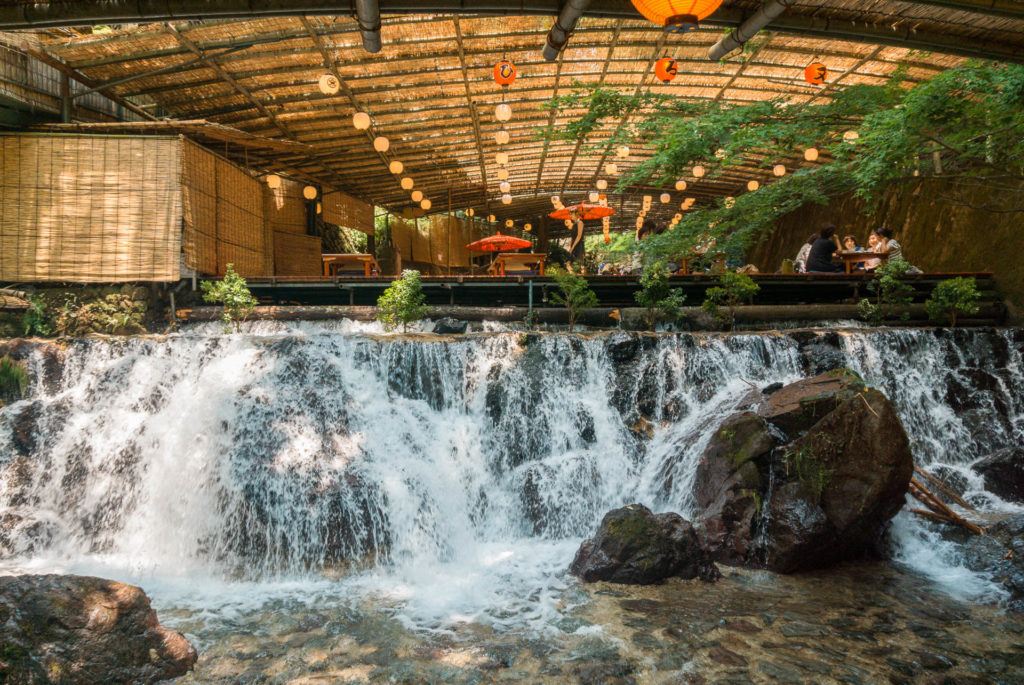
Then I noticed the long row of dried bamboo cut in half, lined with metal, and had different rows inside. As we approached, we were assigned a spot on a cushion in front of the waterfall and we were assigned a row that our party would eat from. This is to make sure you don’t accidentally take someone else’s noodles!
While we waited for the noodles, we were served some matcha warabi mochi that we could enjoy before or after we ate our nagashi somen. Don’t worry it comes with the meal! I decided to wait to eat mine after the meal because once the noodles start flowing they come fast!
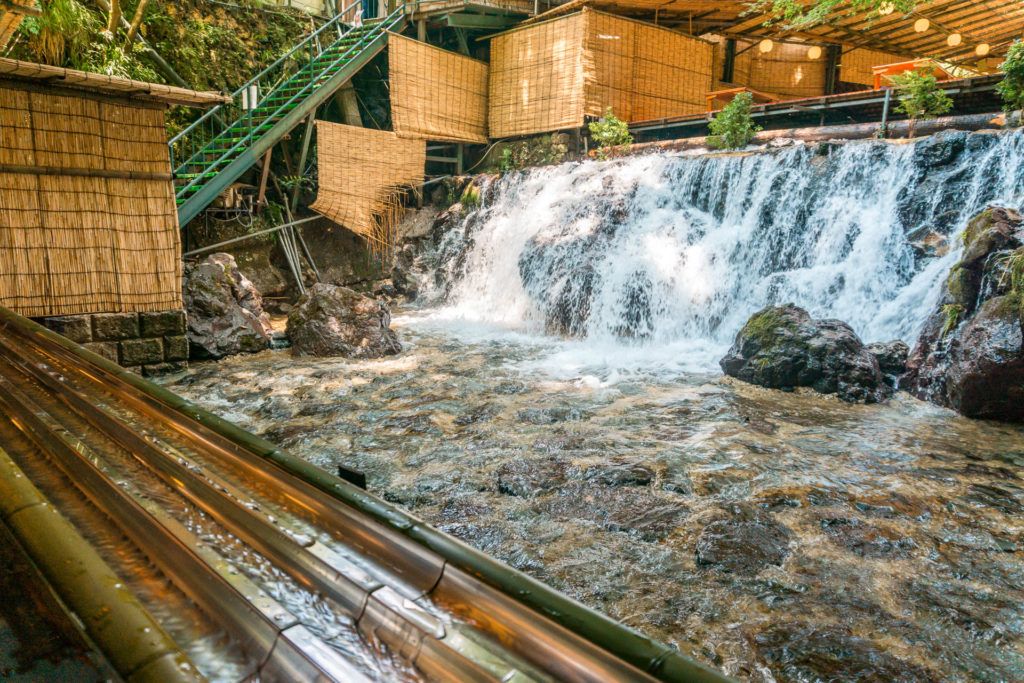
There were four of us in our group who paid to eat at Hirobun so our row had the perfect portions for the four is us. We each took turns grabbing the noodles with chopsticks from our designated row. We decided to do it this way so each person could take time to dip them in the broth and eat.
Since we were sitting in a row next to one another, if one of us accidentally missed our shot at picking up our noodles, another person could get them. Just know that if you completely miss some noodles, you don’t get extra or another chance to retrieve them. Make sure you have a good grip on those chopsticks!
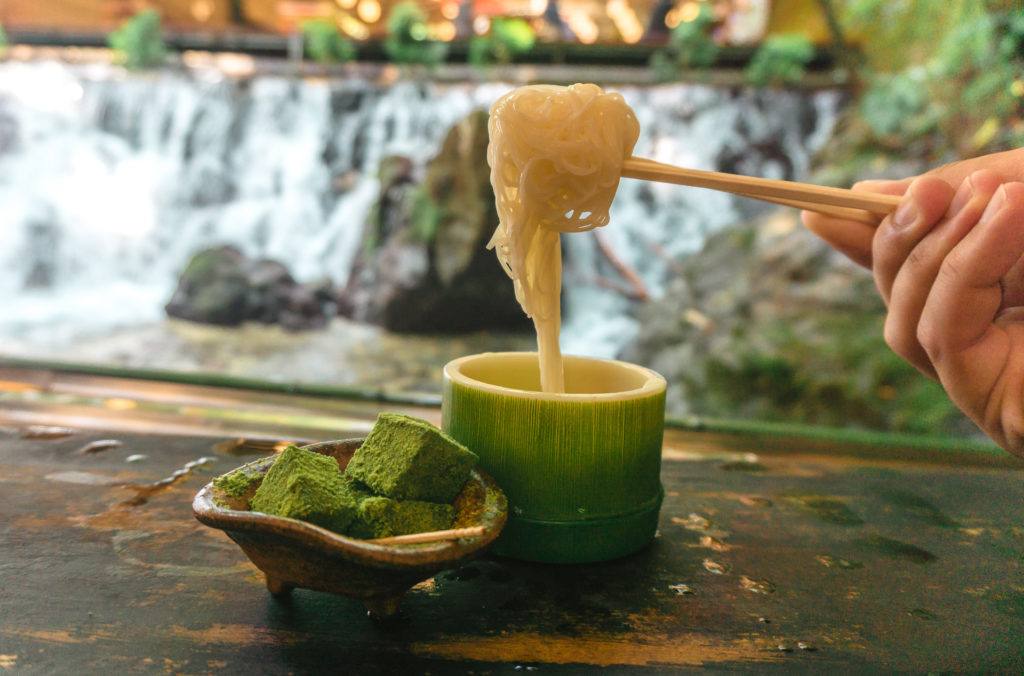
One of the things I wondered most about Hirobun nagashi somen before dining there was “how will I know when there aren’t any noodles left?” Well, Hirobun makes this easy! The last noodles out are always a bright pink, signaling that your meal has come to an end. After eating our nagashi somen we finished our warabi mochi and cold tea, relaxing a moment and enjoying the scenery. Then we collected our belongings and got our shoes in order to leave.
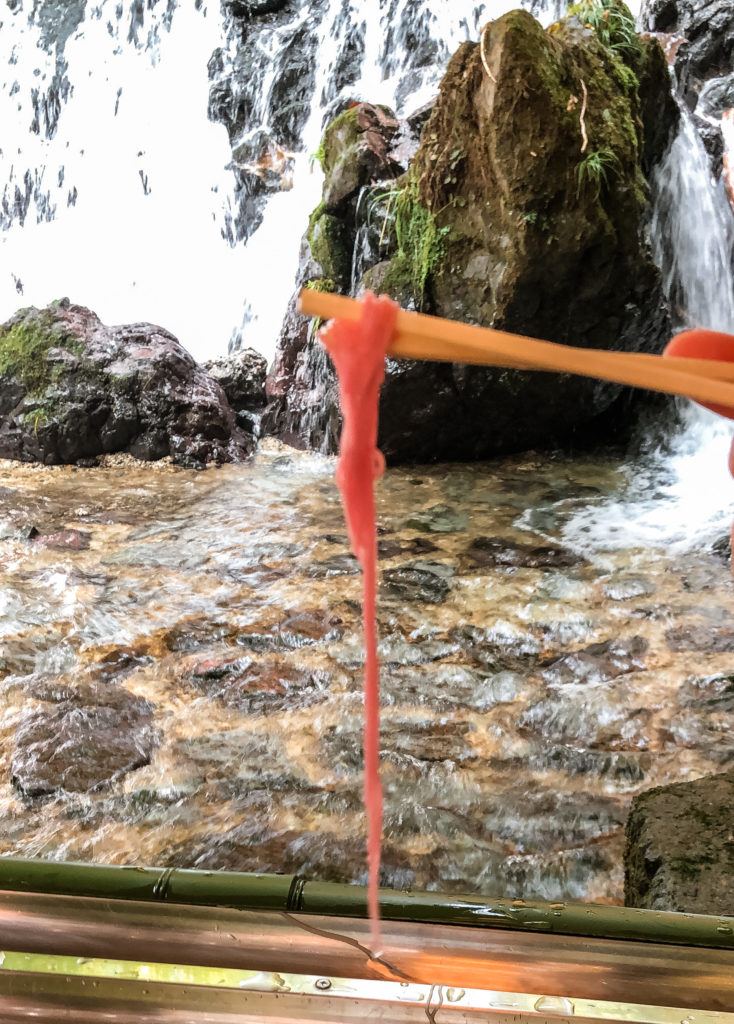
Visiting Kifune Shrine
While you wait for your time slot at Hirobun, make sure you visit Kifune Shrine. Kifune Shrine is a short walk from Hirobun making it the perfect place to visit while you wait or to enjoy after your meal if you don’t have time to visit before.
According to the legend of Kifune Shrine, a goddess traveled upriver in a boat from Osaka to Kyoto until the journey ended at the site of Kifune Shrine. It is said that the boat she traveled on remains here, buried beneath stone. Because of the legend, it is dedicated to the god of water and the protector of the seas. You’ll even notice many shrine elements are primarily focused on water.
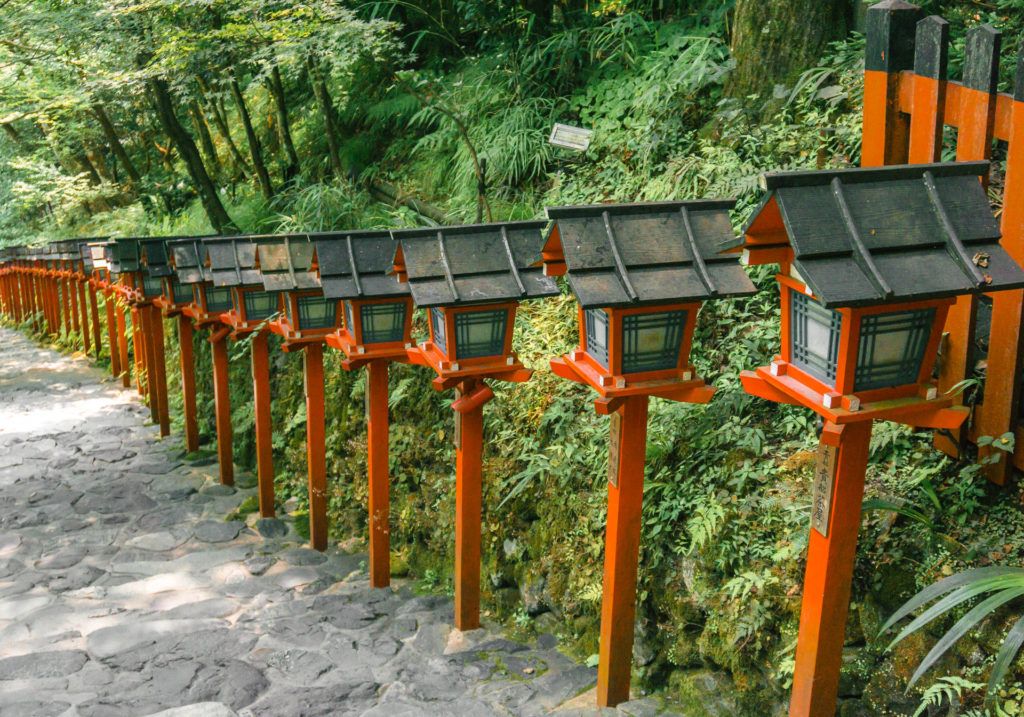
One of the most dynamic features of Kifune Shrine is the long stone staircase with vermillion wooden lanterns on each side of the stairs. These lanterns will lead you up a path to the main hall. The main hall is surrounded by a beautiful green forest and large rocks alongside the mountain making for a picturesque setting!

While visiting the shrine, there is a spot where you can drink goshinsui, the sacred water that flows from the mountain.
Next to that spot is another area where you can purchase a fortune called mizuura mikuji. The fortune only becomes visible when placed in the water located by the main hall. This fortune predicts several areas of your life including career, health, and love.
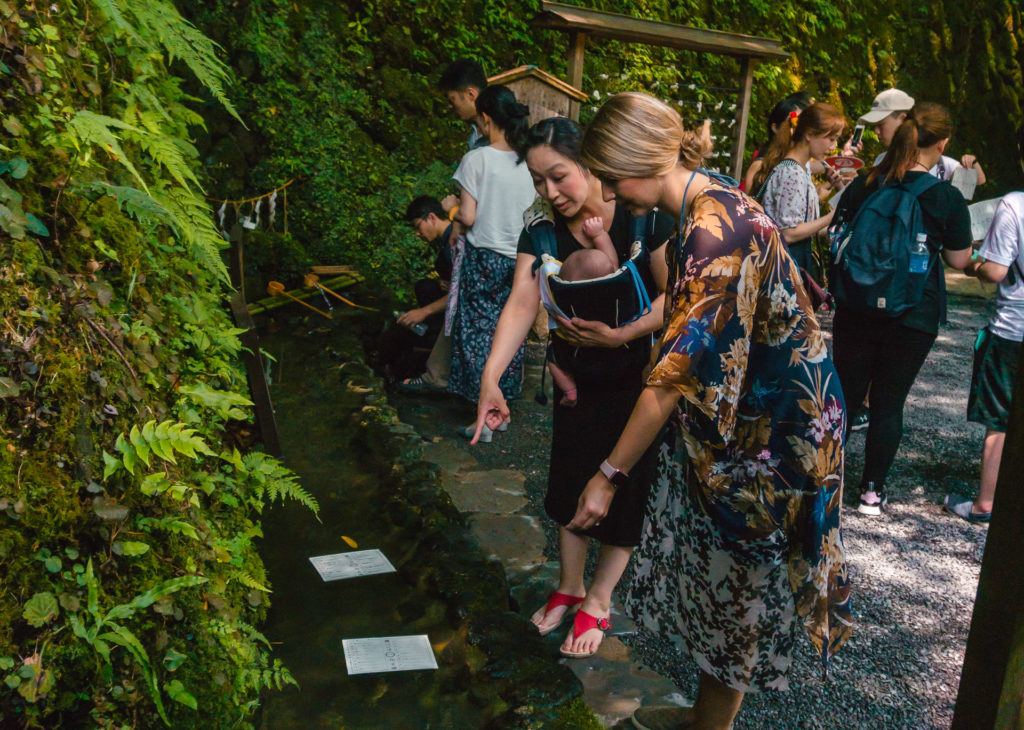
Although the fortune is written in Japanese, there is a small QR code on each omikuji (fortune) so you can pull up a translation. Just make sure that you take a photo or read it quickly because as the water dries your fortune disappears!
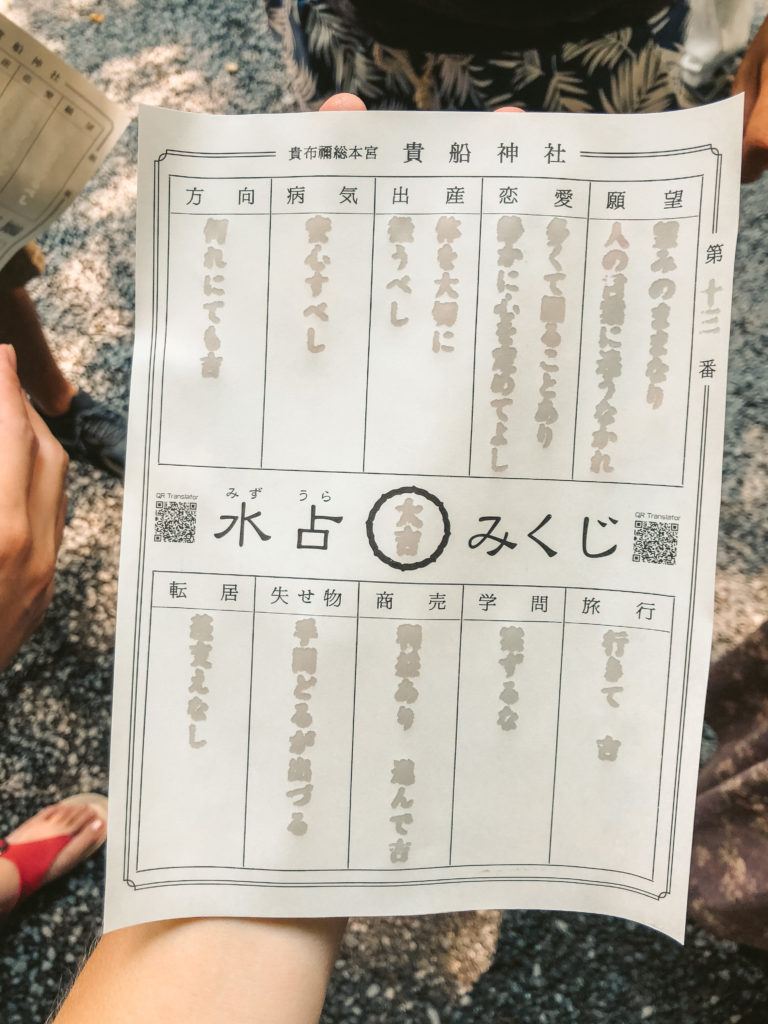
After reading your fortune, you have two options. If you received a fortune of good luck, it’s best to keep your fortune. However, if you received an omen of bad luck on your fortune, you should tie it up and leave it behind at the shrine. This practice is called musubidokoro.
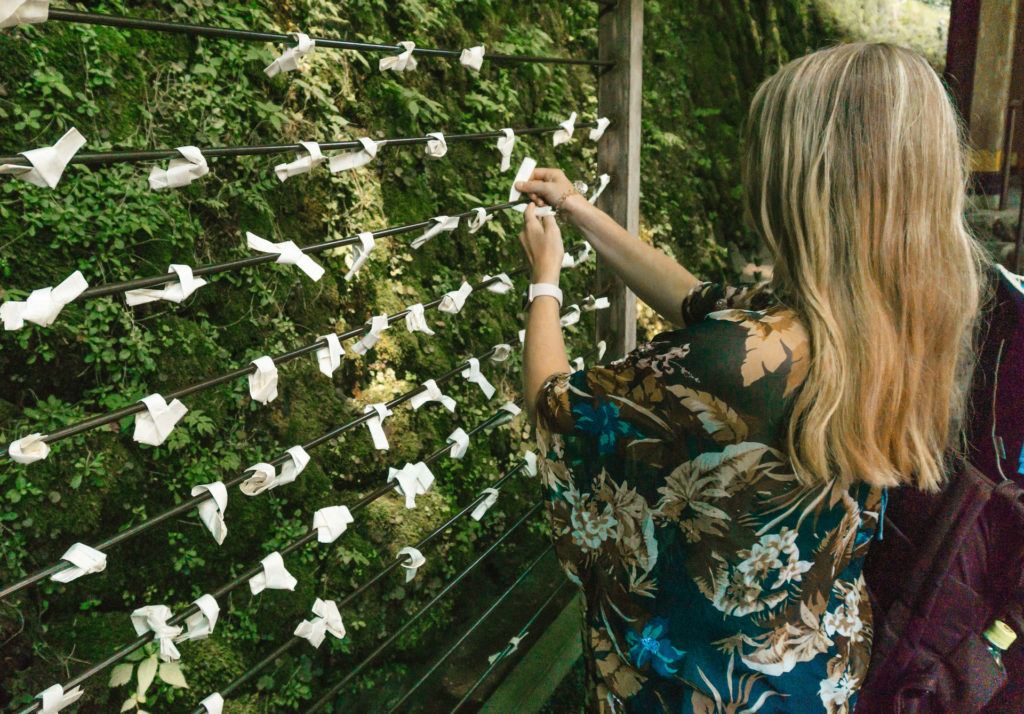
How to Get to Hirobun
When we visited Hirobun we rode with our friends who drove to the restaurant and parked in a small public lot nearby. However, you can also take public transportation to get to Hirobun and Kifune Shrine.
From JR Kyoto Station take the Karasuma Line to Kita-Oji Station. From there, walk to the south ticket gate to the Karasuma Kita Oji bus stop. You’ll want to take bus 52 bound for Kokusai Kaikan. Once on the bus, you’ll get off at Kibuneguchi then take a taxi or bus 33 for Kibune.
Other Hirobun Information
Address: Japan, 〒601-1112 Kyoto, Sakyo Ward, Kuramakibunecho, 8 7 // MAP
Hours: 11am-4pm daily (Only offered from the late-May until around mid-October)
Cost: 1,500 yen per person
Overall, we loved visiting this small town outside of Kyoto and our experience at Hirobun made it even better! If you happen to be visiting Japan during the summer and are stopping in Kyoto, trying Hirobun nagashi somen is something you can’t miss!
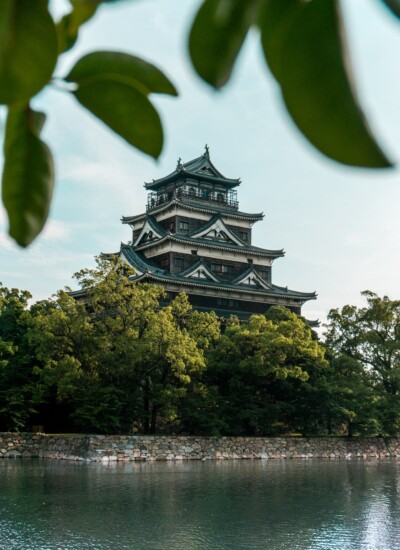


Leave A Reply!